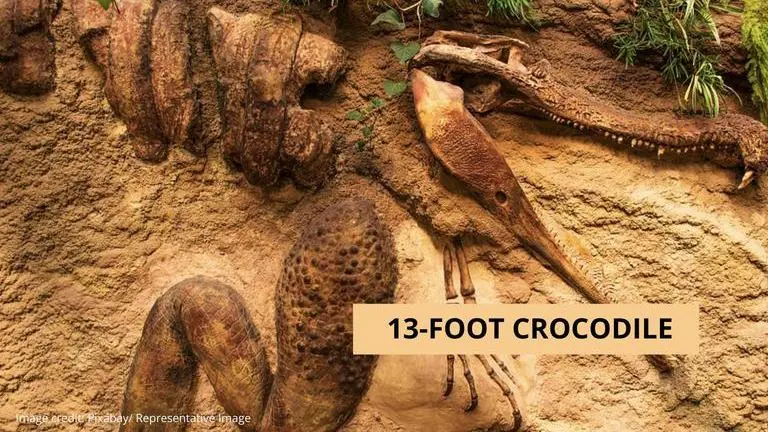Updated 12 June 2020 at 19:42 IST
Prehistoric crocodiles walked on two hind legs, study suggests
Prehistoric Crocodiles found at the Jinju Formation in modern-day South Korea, a rich archaeological site that led to discovery of ancient creatures.
- Science News
- 3 min read

Footprints found in modern-day South Korea that was earlier thought to have been made by Pterosaurs instead belonged to a 13-foot crocodile that walked the Earth 110 to 120 million years ago, which proves that the ancient crocodiles walked on two hind legs. Contrary to the modern-day reptiles that move on all four legs, the ancient creatures' locomotion resembled that of dinosaurs, according to a scientific report published in the journal Nature.
Footprints of the gigantic creature were found at the Jinju Formation in modern-day South Korea, a rich archaeological site that led to the discovery of ancient species of lizards, spiders, and tiny raptors dating back 120 million years by a team of researchers from China, Australia, and the US. According to the study, the footprints were made by the three-meter (10-foot) long crocodile named Batrachopus Grandis, described as "a crocodile balancing on a tight-rope," according to Kyung Soo Kim, a researcher at the Chinju National University of Education.
According to the research, Batrachopus Grandis, the ancient crocodile, weighing nearly 1,000 pounds, had razor-sharp teeth and measured approximately four meters (13.1 feet). “When combined with the lack of any tail-drag marks, it became clear that these creatures were moving bipedally,” Kim said. They were moving in the same way as many dinosaurs, but the footprints were not made by dinosaurs,” Kim explained in the study. “Dinosaurs and their bird descendants walk on their toes. Crocodiles walk on the flat of their feet leaving clear heel impressions as humans do.”
Advertisement
"Bone-crushing" 7-foot long crocodile
Apart from the crocodile, the researchers also discovered footprints dinosaurs, mammals, and frogs from the ancient era. Earlier, in February, a "bone-crushing" 7-foot long crocodile "T. Rex of its time" that walked on four legs and ran on its hind legs over 230 million years ago was discovered in Brazil by the scientists. Further, a 15-foot prehistoric crocodile that lived 180 million years ago was discovered in September 2019.
Advertisement
Suggestive of bipedal locomotion
"Fossil crocodile tracks are quite rare in Asia, so finding an abundance of nearly one hundred footprints was extraordinary," University of Queensland paleontologist Dr. Anthony Romilio added in the statement. “The footprints support the strong consensus that pterosaurs were obligate quadrupeds, not bipeds," the researchers wrote in the study's abstract. “The unexpected discovery of trackways so suggestive of bipedal locomotion by Cretaceous crocodylomorphs has implications bearing directly on long-standing and controversial debates about the gait of pterosaurs,” researchers wrote.
(Images: Nature)
Published By : Zaini Majeed
Published On: 12 June 2020 at 19:42 IST






